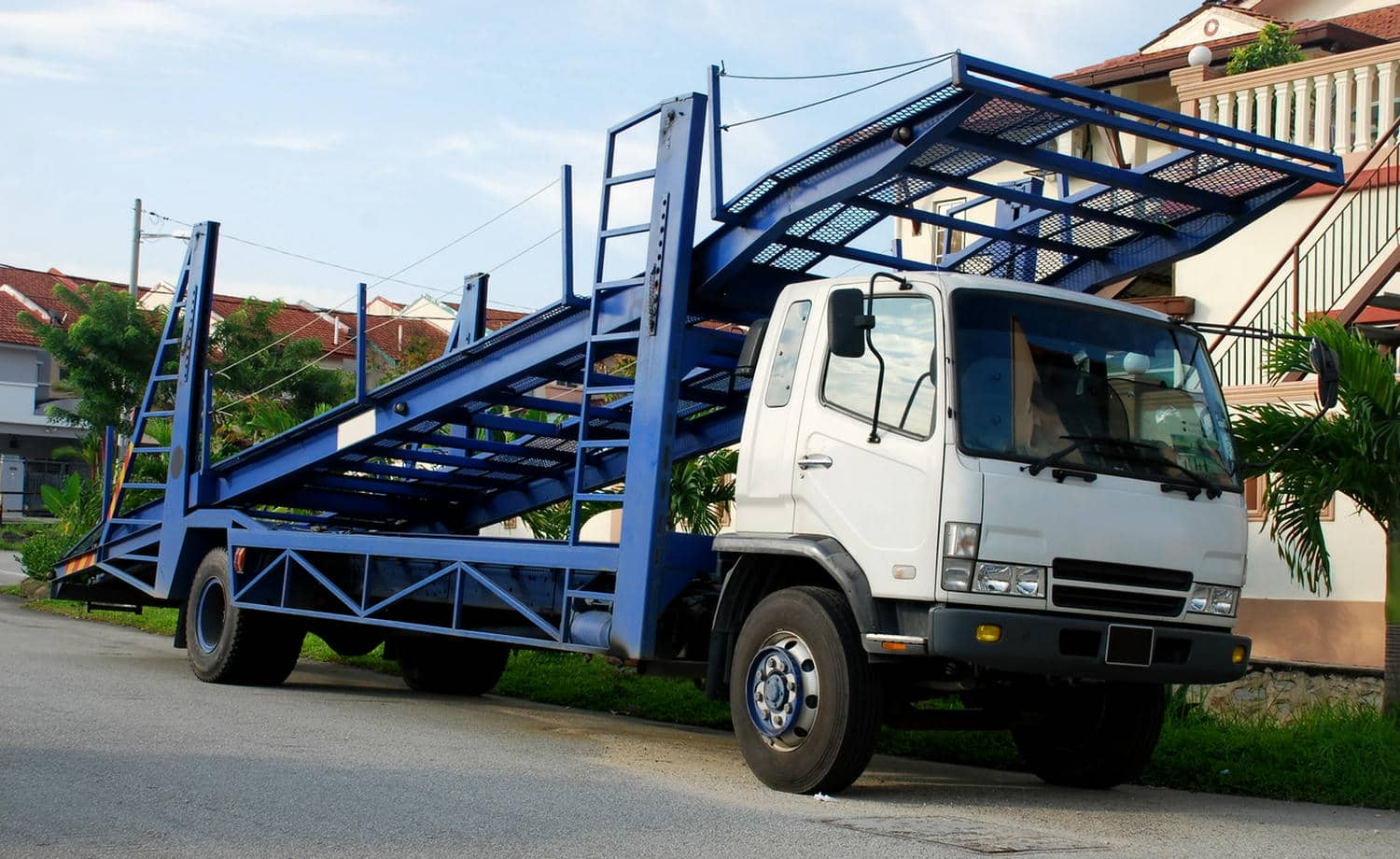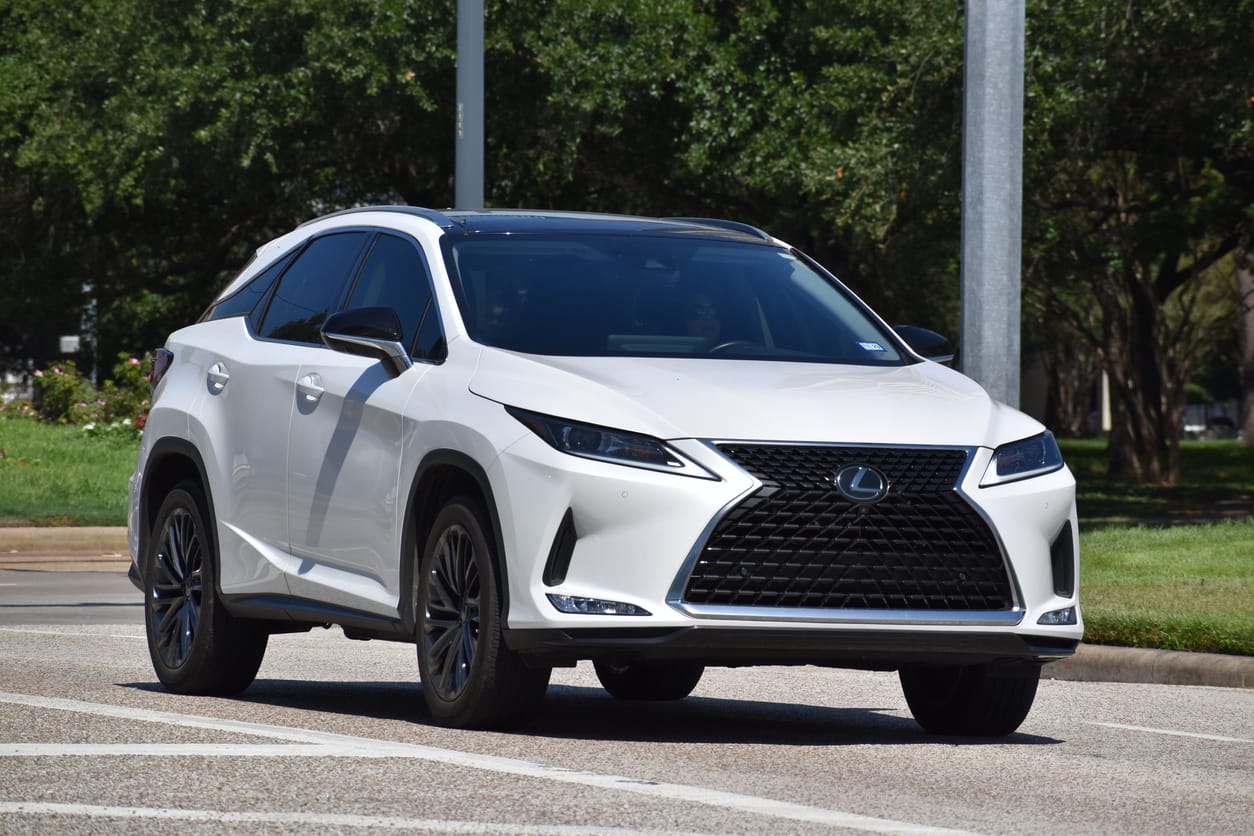Shipping a vehicle long distances—or across the country—can be complex due to many factors influencing the overall cost. Consumers shipping vehicles from compact cars and sedans to classic and luxury models often wonder how elements like shipping distance, vehicle type, and chosen shipping method translate into the final quote. With rising fuel prices, severe weather such as storms or snow, and fluctuations in oil prices, understanding these dynamics is crucial to avoid surprises. This article breaks down the key factors influencing car shipping rates and explains how vehicle value plays a vital role in choosing the optimal shipping method. Readers will learn how to obtain accurate car shipping quotes, identify hidden fees, and follow best practices to reduce costs without compromising vehicle safety.
In addition to cost considerations, a vehicle’s condition and value often determine which shipping method is recommended. For example, high-value or vintage cars might require enclosed transport over open trailers. Similarly, the vehicle’s weight and size impact pricing, as heavier vehicles incur higher fees—especially over long interstate routes or during peak seasons. Logistics factors like fuel costs and insurance further complicate the process, while third-party services such as door-to-door or terminal-to-terminal shipping bring their own advantages and challenges.
Ultimately, whether you are a business owner, classic car collector, or road trip enthusiast, understanding the interplay between shipping costs and vehicle value helps you choose the best shipping option that balances safety, speed, and affordability. The following sections explore these factors in detail, providing practical, data-driven insights for consumers and businesses to understand car shipping costs.
Following on from the introduction, what comes next are the most important takeaways that will help you navigate the primary points that were discussed.
- Car shipping costs are influenced by distance, vehicle type, shipping method, seasonality, fuel costs, and vehicle condition.
- Shipping methods—including open, enclosed, door-to-door, and terminal-to-terminal—offer distinct advantages based on vehicle value and condition.
- Accurate car shipping quotes depend on detailed vehicle information and awareness of hidden fees.
- External factors like seasonal demand and rising fuel prices shape shipping rates.
- Best practices include selecting the right shipping method and properly preparing the vehicle to minimize extra charges.

Car shipping rates are determined by several factors. First, shipping distance greatly influences cost; longer routes correlate with higher fuel and labor expenses. Customers must decide whether they need a short, regional move or a lengthy cross-country transport. In addition, the vehicle’s type and size are vital; larger, heavier vehicles require increased resources and incur higher fees.
Another important factor is the shipping method. Open transport is the most economical but leaves vehicles exposed—making it less ideal for luxury or vintage cars. Enclosed transport offers enhanced protection at a higher cost. Moreover, seasonal factors and fuel costs can significantly affect prices. For instance, companies may adjust rates during extreme weather (like snow in northern states) or when fuel prices soar. A well-maintained vehicle may require less intensive handling, whereas one needing extra care or repairs might incur additional fees. Other potential charges include delivery options (door-to-door versus terminal-to-terminal) and insurance premiums, with supply and demand trends often driving temporary premium pricing.
Shipping distance is a primary cost driver. The farther the vehicle must travel, the more fuel it consumes and the more labor hours are needed. Companies typically calculate a base rate per mile that fluctuates with current fuel prices and the chosen route. For example, a trip from New Mexico to West Virginia covers a vast distance and drives up the cost. Longer distances may also require extra stops, overnight stays by drivers, and additional precautions for weather and road debris—all contributing to higher fees. It is wise to ask for a detailed price breakdown, including any mileage-based surcharges.
A vehicle’s specifications heavily influence its shipping cost. Compact cars generally incur lower fees than heavy-duty pickup trucks or luxury sports cars because smaller vehicles are easier to load and transport. Larger or heavier vehicles require more space on a carrier, reducing overall efficiency. Additionally, vehicles with higher market value—such as vintage or luxury models—often require enclosed transport, a service that carries a premium fee. The vehicle’s design (e.g., convertible or multi-piece construction) and its operational condition (running versus non-running) can also prompt extra handling costs, including the potential need for a winch.
Different shipping methods have varying cost levels and benefits. Open transport, which loads multiple vehicles onto an open carrier truck, is economical but exposes vehicles to the elements. This method suits standard vehicles but not high-value ones. In contrast, enclosed transport places vehicles inside a closed container, offering complete protection from weather and road debris at a higher cost. Door-to-door shipping picks up and delivers vehicles directly, providing convenience while often adding extra fees for residential servicing. Terminal-to-terminal shipping, where customers drop off and pick up their vehicles at designated hubs, can reduce expenses but is less convenient.
Seasonal variations strongly affect car shipping rates. During peak travel seasons—such as summer vacations or holiday relocations—shipping companies face higher demand and may increase their prices. In winter, severe snowstorms and other adverse conditions can lead to delays and extra precautions, which further raise costs. Conversely, off-peak periods can offer lower rates and greater scheduling flexibility. Planning shipments in advance and being aware of seasonal trends can help mitigate unexpected cost surges.
Fuel costs directly impact shipping fees because carriers include fuel consumption in their per-mile rates. When oil prices rise, every extra mile adds more cost to the shipment. Companies often incorporate fuel surcharges that vary with market conditions, meaning a competitive base rate might increase unexpectedly as fuel prices change. Consumers should ask for a clear breakdown of how fuel surcharges are applied to better understand their final quote.
The condition of your vehicle plays a crucial role in determining shipping costs. A vehicle in excellent, fully operational condition requires less specialized handling, while an older or damaged vehicle might need extra care or equipment (such as a winch for non-running cars). Additionally, vehicles in poor condition may require higher insurance coverage to compensate for the increased risk of damage during transit. Thorough maintenance, pre-shipping inspections, and proper preparation (like removing loose items and documenting current condition) can help avoid extra fees and disputes over damage.

The shipping method you choose directly impacts safety, pricing, and overall service quality. There are several common methods:
– Open Transport: The most economical method, where vehicles are loaded onto an open carrier. It is efficient for standard vehicles but exposes them to weather and road debris.
– Enclosed Transport: Offers complete protection by enclosing the vehicle, ideal for luxury or classic cars that require extra care, though it comes at a higher price.
– Door-to-Door Shipping: Provides maximum convenience by picking up and delivering the vehicle at specified locations. However, it usually costs more due to extra handling fees.
– Terminal-to-Terminal Shipping: Offers cost savings by having customers drop off and pick up vehicles at designated hubs, though it may be less convenient.
Each method has pros and cons that must be weighed against the vehicle’s value and the customer’s priorities.
Open transport is widely used for standard vehicles that do not require specialized protection. Because multiple vehicles share the same carrier, rates are lower. This method is ideal when weather exposure is not a major concern and when the vehicle is robust. However, for vintage or high-value vehicles, open transport may not be suitable because exposure to sun, rain, or road debris can cause damage.
Enclosed transport is designed to shield high-value or delicate vehicles completely. By loading vehicles into a closed container, it protects against dust, rain, snow, and road debris. This method minimizes the risk of physical damage or cosmetic wear, which is essential for classic or luxury cars. Although it comes at a higher cost, the added expense is justified by the superior protection and enhanced insurance options provided.
Door-to-door shipping offers the utmost convenience by handling both pickup and delivery directly at the customer’s locations. This personalized service eliminates the need for additional transportation to a terminal, saves time, and reduces logistical challenges. Although it is typically more expensive than terminal-to-terminal service, many customers find the extra convenience and reduced handling risk worthwhile—especially if the vehicle is high-value or requires special care.
Terminal-to-terminal shipping is a cost-effective option in which customers drop off and pick up their vehicles at designated shipping centers. By consolidating shipments at these hubs, carriers can optimize routes and reduce operational costs, transferring the savings to the customer. While this method is less convenient than door-to-door service, it is attractive to budget-conscious consumers who have access to suitable terminal locations.

A vehicle’s value greatly influences the selection of the shipping method and the overall cost. High-value vehicles typically require extra protection, often necessitating enclosed transport. The higher cost of such service is justified by the need to minimize risk from road debris, severe weather, or other hazards that could cause damage. In addition, additional insurance coverage is usually required to cover any potential losses.
For classic, vintage, or luxury vehicles, even minor damage can have significant financial or sentimental implications. Consequently, these vehicles are often segregated from standard shipments and handled with specialized care, including detailed pre-shipment documentation. The balance between cost and protection means that while open transport may be cheaper, it might not provide the level of security required for a high-value asset.
The higher the vehicle’s value, the more likely it is that extra protection measures will be applied. A lower-value vehicle can typically be shipped via open transport without significant risk of depreciation from minor wear. In contrast, high-value vehicles require methods that include protective packaging, enhanced insurance, and specialized handling to prevent even minimal damage. Thus, vehicle value acts as a guiding parameter for selecting between cost-effective and premium shipping options.
For classic and vintage cars, enclosed transport is generally the best shipping option. This method offers full protection from the elements and minimizes the risk of damage during transit. Many companies specialize in high-value vehicle transport and provide additional security measures such as dedicated carriers, meticulous loading procedures, and enhanced insurance policies. Although the cost is higher, the protection it offers can preserve the car’s condition and historical value. Some owners also opt for door-to-door shipping to further reduce handling risks. If you would like to learn more about this specific type of shipping, please visit the section of the website that is specifically devoted to “Classic Car Shipping.”
Luxury vehicles require the highest standards of care. Enclosed transport is usually recommended because it completely shields the vehicle from adverse weather, road debris, and other potential hazards. Additional security measures, personalized service, and comprehensive insurance are standard practices in premium shipping services. While these services have a premium price, they ensure that the vehicle remains in pristine condition throughout the journey, preserving both its aesthetic and market value. We recommend that you read our blog post titled “Luxury Car Shipping in the United States with Ship A Car, Inc.” for additional information regarding this specific means of transportation.
Shipping insurance is essential for high-value vehicles, including classic, vintage, or luxury models. It mitigates the financial risk associated with any damage that may occur during transit. A comprehensive shipping insurance plan typically covers damage from accidents, environmental exposure, and theft. Owners should carefully review the insurance terms provided by the carrier and consider additional coverage if needed. Detailed pre-shipping documentation and photographic evidence of the vehicle’s condition are recommended to support any future claims. Given the high stakes, the added cost of robust insurance is a worthwhile investment.

Obtaining an accurate shipping quote requires providing detailed information about both the vehicle and the route. Customers should supply basic details such as the make, model, and year, as well as the operating condition of the vehicle—whether it is running or non-running—and any special requirements that might necessitate enclosed transport. The pickup and delivery addresses are critical because they determine the shipping distance and may highlight potential challenges (for example, remote or curbside locations). In addition, the chosen shipping method (open, enclosed, door-to-door, or terminal-to-terminal) and the desired timeframe must be specified.
It is also important to ask about any additional fees that might not be immediately apparent. Hidden charges such as fuel surcharges, toll fees, pickup/delivery fees, or extra insurance costs can alter the final quote. Requesting a detailed breakdown and comparing quotes from multiple shipping companies can help secure the best value.
To generate an accurate quote, you should provide:
• The vehicle’s year, make, and model
• Its condition (running or non-running)
• Any special requirements (e.g., need for enclosed transport for high-value or classic cars)
• Pickup and delivery addresses
• Preferred shipping method and desired shipment timeframe
• Accurate details on vehicle dimensions and weight
This complete information ensures that carriers can plan their load efficiently and provide a precise estimate.
When comparing quotes, transparency is key. Look for detailed breakdowns including base price, fuel surcharges, insurance, and any extra fees for pickup and delivery. Comparing multiple quotes side-by-side—perhaps using a table that lists carrier name, base price, additional fees, total estimated cost, and service method—can help identify which provider offers the best overall value. It’s also important to consider the carrier’s reputation, level of customer service, and the extent of insurance or guarantees provided. A low base rate may not offer comprehensive protection, so balancing cost with quality is essential.
Hidden fees that you should scrutinize include:
• Fuel surcharges that can fluctuate with market prices
• Extra pickup or delivery fees, especially with door-to-door service
• Administrative or processing fees
• Additional charges for expedited shipping or for non-running/oversized vehicles
Requesting a full breakdown prevents surprises on the final invoice and helps ensure that the quote is truly comprehensive.

Below are common questions that help clarify key aspects of car shipping costs and vehicle value:
Car shipping costs vary widely based on distance, vehicle type, shipping method, and market conditions such as fuel prices. Generally, standard vehicles over moderate distances can be shipped for anywhere between $500 and $1,500. For high-value or larger vehicles that require enclosed transport, prices can range from $1,500 to $3,000 or more. Additional services like door-to-door or expedited shipping will further raise the cost.
Transit times depend on the distance and current operational conditions. Local or regional shipments typically take 2 to 5 days, while cross-country shipments (for example, from the East Coast to the West Coast) can take 1 to 2 weeks. Weather delays, heavy traffic, and other unforeseen factors may lengthen delivery times, so obtaining an estimated delivery date and tracking the shipment are important.
Yes, car shipping can be very safe for high-value vehicles when the appropriate method—usually enclosed transport—is chosen. Professional carriers using proper loading, securing, and insurance protocols minimize risks. It is important for owners to verify that the carrier is licensed, insured, and well-regarded for handling high-value assets.
Shipping insurance typically covers damages from accidents, physical impacts, scratches, dents, and exposure to harmful environmental elements. Policies may also cover theft or vandalism. High-value vehicles might require additional or enhanced coverage to ensure full protection. Reviewing policy details and considering supplemental insurance—if needed—can provide extra peace of mind.

External factors significantly influence shipping costs. Seasonal demand can raise prices during peak travel periods—such as summer vacations or holidays—and lower them during off-peak times. Harsh weather conditions in winter may lead carriers to implement extra safety measures, resulting in increased costs. Rising fuel prices cause carriers to adjust per-mile charges and add fuel surcharges, making pricing dynamic and subject to market fluctuations.
During peak seasons, high demand drives up shipping prices as carriers try to balance capacity. In contrast, off-peak times may offer more competitive rates. Extreme weather events, like heavy snow or thunderstorms, can further delay shipments and add extra charges.
As fuel prices rise, shipping companies pass on the extra expense to consumers through fuel surcharges. Since these surcharges are variable and tied to current oil prices, the overall cost of shipping can increase unexpectedly. Consumers should monitor fuel pricing trends and request clarity on how these surcharges are calculated.

Reducing car shipping costs without sacrificing safety is possible with careful planning and preparation. Key strategies include choosing the most appropriate shipping method based on vehicle value and ensuring thorough preparation before shipment.
For standard vehicles, open transport offers cost savings by minimizing handling and protection requirements. However, for classic or high-value vehicles, the minimal extra cost of enclosed transport is justified by the increased protection it provides. Matching the shipping method to the vehicle’s specific needs helps avoid unnecessary extra expenses.
Open transport is safe for vehicles that are robust and not highly valuable, and where exposure to external conditions is less of a concern. This method is best suited for everyday sedans or pickup trucks that are not sensitive to weather-related wear. However, in areas with severe weather or for vehicles with delicate components, additional insurance and precautionary measures should be considered.
Proper preparation can significantly lower shipping fees. Cleaning the vehicle thoroughly removes dirt and debris that might otherwise be mistaken for damage. Removing personal items and documenting the vehicle’s condition with detailed photographs facilitates smoother claims processing, if needed, and reduces the risk of disputes. These steps can also help negotiate lower insurance premiums and contribute to a more efficient shipping process.
Before diving into the final sections, consider the following table summarizing key attributes of various shipping methods.
Shipping Method | Protection Level | Cost Level | Best For | Additional Fees |
|---|---|---|---|---|
Basic (exposed to elements) | Low | Standard vehicles, low-value cars | Fuel surcharges, pickup fees | |
High (full protection) | High | Luxury, classic, and high-value cars | Expedited service fees, extra insurance | |
Varies (high convenience) | Moderate to High | Consumers preferring convenience | Pickup and delivery surcharges | |
Terminal-to-Terminal | Moderate | Low to Moderate | Budget-conscious, access to terminals | Drop-off and pickup coordination fees |
This table offers a quick reference to help consumers choose the method that best meets their protection needs and budget considerations.
Following the table, the discussion continues with deeper insights into vehicle value’s influence and more best practices for reducing transport expenses.
Q: What are the main factors that affect car shipping costs? A: Factors include shipping distance, vehicle type and weight, chosen shipping method, seasonal demand, fuel prices, and the condition or value of the vehicle. Carriers may also add surcharges to account for fluctuations in fuel costs and demand.
Q: How do I choose between open and enclosed transport? A: If your vehicle is a standard, low-value car, open transport is cost-effective. For classic, vintage, or high-value models, enclosed transport is recommended despite its higher cost because it offers enhanced protection against weather and road debris.
Q: Can I get an accurate car shipping quote online? A: Yes. Most companies provide online quoting systems that require details like make, model, condition, and pickup/delivery addresses. Accurate information helps generate a comprehensive quote, so be sure to compare multiple providers.
Q: Are there hidden fees in car shipping quotes? A: Hidden fees can include fuel surcharges, extra fees for door-to-door pickup or delivery, administrative charges, and adjustments for non-running or oversized vehicles. Always request a full breakdown of costs.
Q: Is shipping insurance necessary for high-value vehicles? A: Yes. High-value vehicles benefit from comprehensive shipping insurance that covers damage from accidents, weather, and theft. Always review the policy details and consider supplemental coverage if needed.
Q: How do seasonal changes impact car shipping? A: Shipping rates can increase during peak seasons—such as holidays or summer months—and drop during off-peak times. Weather conditions like snow or rain may also cause delays and add costs.
Q: What steps can I take to reduce car shipping costs without reducing safety? A: Choose the appropriate shipping method for your vehicle, prepare it thoroughly by cleaning and documenting its condition, and compare multiple quotes. Opting for terminal-to-terminal shipping or scheduling shipments during off-peak times can help lower costs while keeping your vehicle safe.

Understanding car shipping costs requires a careful evaluation of many factors including distance, vehicle type, shipping method, and external economic conditions such as fuel prices and seasonality. Vehicle value plays a critical role in determining the level of service and protection required. By gathering detailed information, comparing multiple quotes, and preparing the vehicle properly, consumers can manage costs effectively without compromising safety. Ultimately, informed decisions based on accurate data and industry best practices will lead to a smooth, reliable, and cost-effective shipping experience.
When it comes to affordable and reliable car shipping, Ship A Car, Inc. stands out as the best choice for both individual consumers and businesses alike. With over a decade of experience, SAC has perfected the art of matching each customer’s unique vehicle type, value, and transport needs with the ideal shipping method—ensuring protection, convenience, and cost transparency. Unlike many competitors, Ship A Car, Inc. provides detailed quotes with no hidden fees and offers expert guidance on the right transport option—whether you’re shipping a classic, luxury, or everyday vehicle. Their trusted network of licensed, insured carriers and real-time customer service ensures peace of mind from pickup to delivery. Whether you need open or enclosed transport, or door-to-door or terminal-to-terminal shipping, Ship A Car delivers a personalized, data-driven experience every time. Call (866) 821-4555 now to get your custom quote, or use our quick and easy online auto transport calculator to receive an instant shipping estimate.
*All data and car shipping rates found in this article are accurate at time of publication and subject to change.




